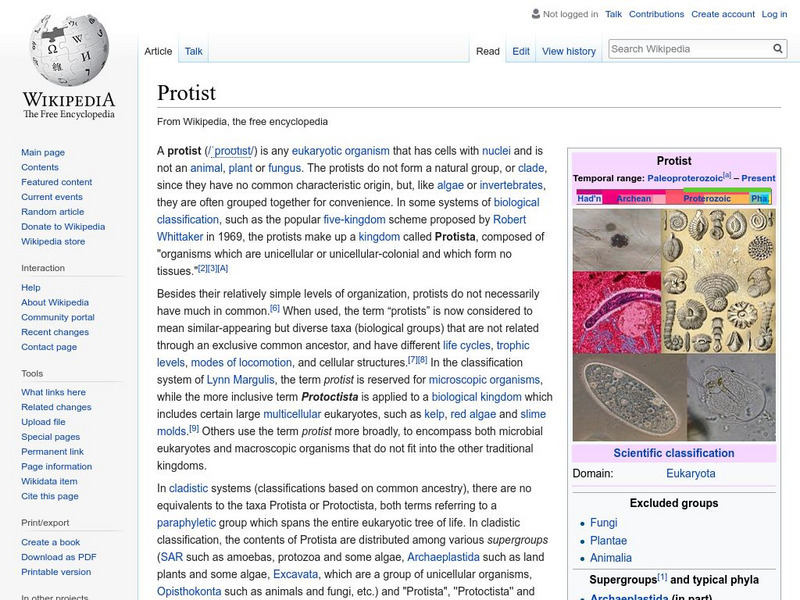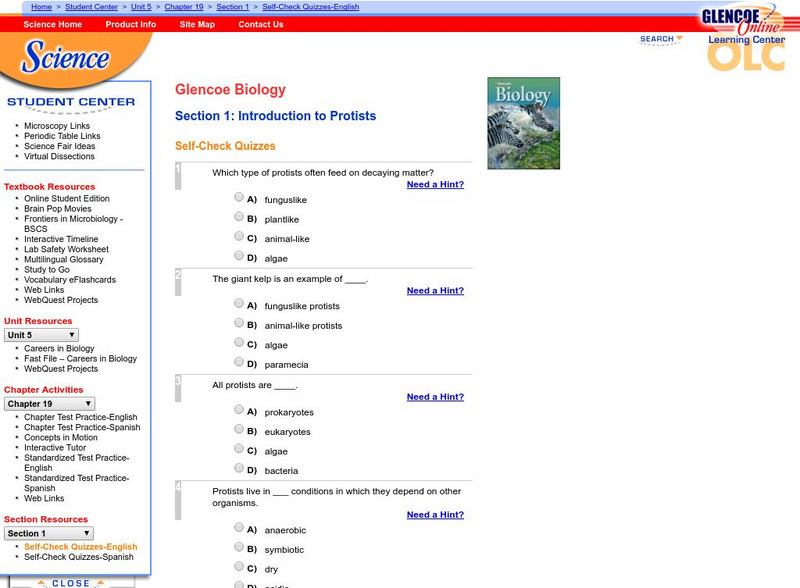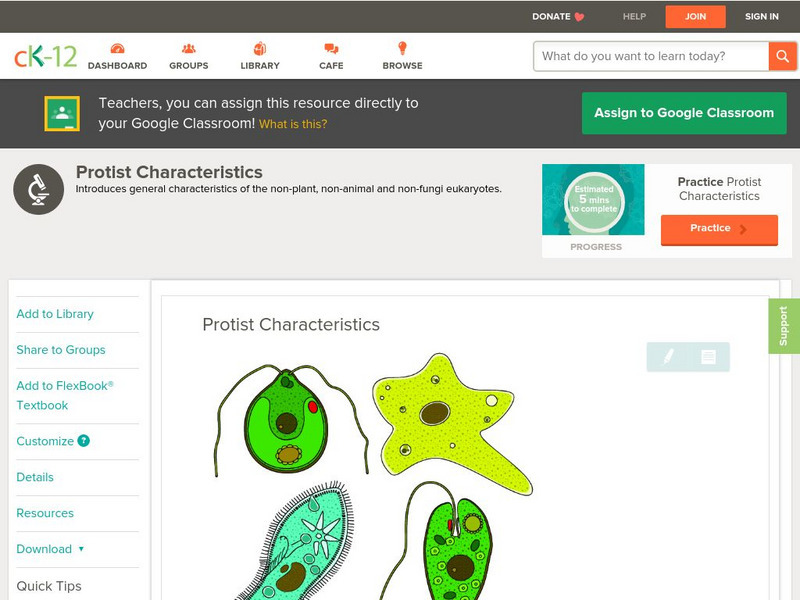Hi, what do you want to do?
BiologyWise
Biology Wise: Reproduction in Fungi
Presents interesting facts about fungi and describes how they reproduce both sexually and asexually.
CK-12 Foundation
Ck 12: Biology: Molds
[Free Registration/Login may be required to access all resource tools.] Describes different types of fungus-like protists.
Ducksters
Ducksters: Biology for Kids: Infectious Disease
Kids learn about infectious diseases including pathogens such as viruses, bacteria, parasites, and fungi as well as transmission and other types of diseases.
Wikimedia
Wikipedia: Protist
Wikipedia provides information on the biological kingdom protista, including a list of different divisions of the kingdom.
CK-12 Foundation
Ck 12: Biology: Autotrophs and Heterotrophs
[Free Registration/Login may be required to access all resource tools.] Discusses how autotrophs and heterotrophs obtain energy.
BiologyWise
Biology Wise: The 5 Significant Kingdoms of Living Things
Describes the characteristics of the five kingdoms of living things - Monera, Protista, Fungi, Plantae, and Animalia.
McGraw Hill
Glencoe Biology: Introduction to Protist: Self Check Quiz
Try these five multiple-choice questions about protists. After submitting answers, students can review the material.
Curated OER
Science Kids: Science Images: Types of Fungi
A collage featuring five images of different types of fungi including one that shows some very old and unappetizing bread.
BiologyWise
Biology Wise: The Cell Wall Functions in Plants and Animal
Describes the composition and functions of cell walls in plants, algae, fungi, and bacteria.
Other
Ny Botanical Garden: Fungal and Plant Diversity
Findings of an expedition by the New York Botanical Garden in French Guiana to investigate vegetation.
Michigan State University
Michigan State University: Digital Learning Center for Microbial Ecology: Microbe Zoo
Explore the "many worlds of hidden microbes" in different areas of the Microbe Zoo: DirtLand, Animal Pavilion, Snack Bar, Space Adventure, and WaterWorld. A fun and informative resource that sheds light on the role of microbes in our...
Tree of Life Project
The Tree of Life Web Project
The Tree of Life is a multi-authored, Internet distributed project containing information about phylogeny and biodiversity. The Tree of Life can be used to locate information about a particular group of organisms through their taxonomy.
BiologyWise
Biology Wise: Mold vs. Yeast
Discusses the characteristics of mold and yeast and how they are different in terms of structure, where they are found, method of reproduction, and appearance.
BiologyWise
Biology Wise: What Causes Growth of Bread Mold and How to Prevent It?
Explains what bread mold is, what causes it to grow on bread, factors that contribute to its growth, and how to prevent its growth. Includes an experiment for growing mold on bread.
BiologyWise
Biology Wise: Bread Mold Facts
Explains what bread mold is, what causes it to grow on bread and other surfaces, types of bread molds, health risks, and some benefits.
BiologyWise
Biology Wise: Black Bread Mold
Explains what black bread mold is, what it grows on, the conditions needed for growth, its method of reproduction, how to grow it, and how to prevent its growth.
Other
Microbe World: Experiments
In this hands on site, students will have the opportunity to be amateur microbiologists by performing a number of experiments. Supplies needed can found in the home or at a nearby store.
CK-12 Foundation
Ck 12: Life Science for Middle School
This digital textbook covers core life science concepts and includes interactive features, real-world examples, and videos.
CK-12 Foundation
Ck 12: Life Science: Timeline of Evolution
[Free Registration/Login may be required to access all resource tools.] For life to evolve from simple single-celled organisms to many millions of species of prokaryotic species to simple eukaryotic species to all the protists, fungi,...
CK-12 Foundation
Ck 12: Life Science: Protist Characteristics
[Free Registration/Login may be required to access all resource tools.] Protists are eukaryotes, which means their cells have a nucleus and other membrane-bound organelles. Most protists are single-celled. Other than these features, they...
Curated OER
Secondary Science Program: The Six Kingdoms
A short overview of the six kingdoms in our scientific classification system: Plants, Animals, Protists, Fungi, Archaebacteria, and Eubacteria. A good explanation of how organisms are placed in their particular kingdom.
Curated OER
Secondary Science Program: The Six Kingdoms
A short overview of the six kingdoms in our scientific classification system: Plants, Animals, Protists, Fungi, Archaebacteria, and Eubacteria. A good explanation of how organisms are placed in their particular kingdom.
Curated OER
Secondary Science Program: The Six Kingdoms
A short overview of the six kingdoms in our scientific classification system: Plants, Animals, Protists, Fungi, Archaebacteria, and Eubacteria. A good explanation of how organisms are placed in their particular kingdom.















